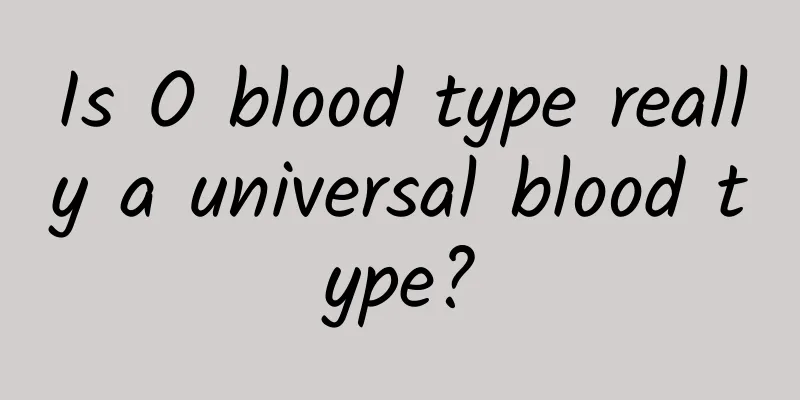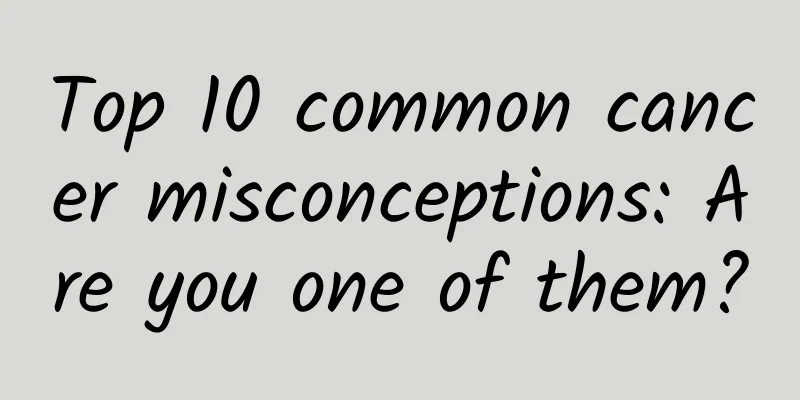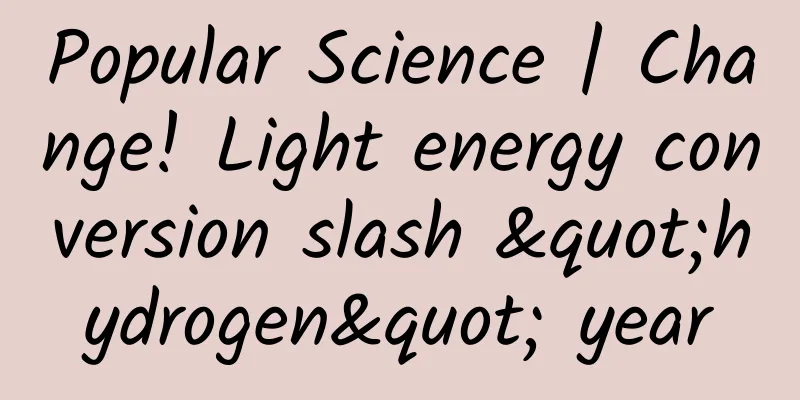Is O blood type really a universal blood type?

|
Produced by: Science Popularization China Author: Jia Wei (Institute of Zoology, Chinese Academy of Sciences) Producer: China Science Expo The human body is mainly composed of water, blood, muscles, bones and fat. Although blood accounts for the smallest proportion of the total body weight, about 8%, its importance in the human body cannot be denied. Blood is mainly composed of plasma and blood cells (including red blood cells, white blood cells, platelets), and has the functions of transportation, defense, hemostasis and immune regulation. "We have the same blood and drink the same water..." This melody is widely sung, but from a scientific point of view, it is not completely correct. As we all know, our blood is divided into different "blood types", which is determined by the different blood type antigens carried on the surface of red blood cells in the blood. Scientists have discovered more than 40 blood type antigen systems on the surface of human red blood cells, the most common of which is the ABO blood type system. What we usually call "blood type" also refers to ABO blood type. In the ABO blood type system, only antigen A on the red blood cell membrane is type A, only antigen B is type B, if both A and B antigens exist, it is type AB, and if neither of the two antigens exists, it is type O. At the same time, people with different blood types have different antibodies in their serum, but do not contain antibodies against their own red blood cell antigens. For example, type A blood serum only contains anti-B antibodies, type O blood serum contains both anti-A and anti-B antibodies, and type AB blood serum has neither of the two antibodies. Blood (Photo source: veer gallery) Exploration of ABO blood group system and compatible blood transfusion principles Blood transfusion therapy is very common in today's surgical operations, trauma treatment, and tumor treatment, but any mature technology cannot be separated from long-term exploration. Hippocrates of Cos, the father of Western medicine, created the classic of Western traditional medicine - the theory of humors, which has dominated Western medical practice for thousands of years. It believes that the occurrence of diseases should be attributed to the imbalance of body fluids, and the main means to restore balance are vomiting, sweating, diarrhea and bloodletting. Among them, bloodletting therapy is considered to be a major "universal" treatment method and is highly praised. The history of human blood transfusion also began with the "humoral theory". As early as the 1660s, there were records of transfusing sheep and calf blood into the human body for treatment. Some patients recovered, while others died of severe transfusion reactions. On April 17, 1668, the French Parliament banned blood transfusions, and the British Parliament quickly followed suit. In the following 150 years, the blood transfusion technique that once caused a sensation in the medical community was ignored. The discovery of human blood types is a groundbreaking event in the history of blood transfusion. As early as 1875, German physiologist Leonard Landois published a paper after analyzing previous blood transfusion records, proposing the conclusion that "hemolytic reactions caused by blood incompatibility or blood dissimilarity are the cause of transfusion failure or even death." In the early 20th century, Karl Landsteiner, a pathologist in Vienna, discovered that when blood from different people was mixed, blood cells sometimes coagulated. In order to explore the nature of this phenomenon, he conducted a large number of experiments and discovered the ABO blood type system. At the same time, Landsteiner also observed that patients who received blood transfusions sometimes had a series of adverse reactions, and severe cases even died; he believed that this was because humans had different blood types, and some blood types were incompatible with each other. (Photo source: veer photo gallery) Blood is very easy to coagulate after leaving the body, which was one of the difficulties faced by blood transfusion therapy at that time. In 1915, Dr. Richard Lewisohn discovered that 0.2% citric acid can prevent blood coagulation and is harmless to the human body. This discovery made blood transfusion surgery popular, but hemolytic reactions also caused deaths frequently. It was not until 1908 that researchers discovered that cross-matching must be performed before blood transfusion to prevent the occurrence of hemolytic reactions. Cross-matching is to determine the compatibility of blood transfusion. It is done by adding the recipient's serum to the donor's red blood cell suspension (primary side matching) or the donor's serum to the recipient's red blood cell suspension (secondary side matching). At the same time, an agglutination test is performed to confirm whether there is an antigen-antibody reaction between the two blood types to ensure the safety of blood transfusion for the recipient. The exploration found that, without considering other interfering factors such as the external environment and experimental facilities: ① Blood that has no agglutination reaction in both the primary and secondary blood matching tests in the experiment can be transfused without special reactions; ② Blood that has an agglutination reaction in the primary or secondary blood matching tests in the experiment will lead to hemolysis and should not be transfused. (Photo source: veer photo gallery) In the early clinical transfusion, whole blood was transfused. However, in clinical applications, it was found that many patients actually did not need whole blood, but a certain effective component in the blood. The demand for blood in World War II in 1943 prompted the successful separation and use of red blood cells. Since the 1960s, with the invention and application of blood preservation fluid, closed sterile blood collection and separation plastic blood bag system, blood cryopreservation technology and large-capacity refrigerated centrifuge, clinical blood transfusion has transitioned from whole blood transfusion to component blood transfusion, which is a historic turning point in the history of clinical blood transfusion. People have come to realize that component blood transfusion has many advantages: first, one blood can be used for multiple purposes, saving blood resources. Whole blood donated by healthy blood donors can be separated and prepared into three components: red blood cells, platelets and plasma, which are used for three patients who are in urgent need of blood transfusion treatment; second, the concentration and purity of component blood are high, and the specificity is strong, which is conducive to reducing adverse reactions to blood transfusion; third, the lifespan and storage conditions required for different blood cells are different. For example, red blood cells can be stored for 35 days in a 4°C environment, while platelets need to be stored in a 20-24°C temperature with a shaking storage period of only 5 days. Storing different blood components separately can maximize their functions and values and facilitate their use. Is O blood type really a universal blood type? After the above explanation, I believe everyone has a basic understanding of blood types and blood transfusion principles. Then, do you also have a new understanding of the statement that "O" type blood is the universal blood type? In fact, O-type red blood cells are universal. In the cross-matching experiment, O-type red blood cells do not have antigen A and antigen B on their membranes, and will not agglutinate with the serum of any other blood type. The serum of O-type blood contains anti-A and anti-B antibodies, which will agglutinate with the antigens on the red blood cell membranes of any other blood type (except O-type blood), so O-type platelets and plasma cannot be transfused to patients with other blood types. Similarly, AB-type platelets and plasma, because they do not contain anti-A and anti-B antibodies, will not agglutinate with red blood cells of any other blood type, and can be called "universal platelets" or "universal plasma". It is worth noting that although O-type red blood cells can be transfused to patients of any other blood type, a small amount of plasma will still be mixed in the process of red blood cell separation, so the transfusion speed should not be too fast to avoid a small amount of antibodies in the plasma and the red blood cells of the recipient. At the same time, O-type red blood cells are universal but have certain limitations. In the case of emergency blood transfusion, O-type red blood cells can indeed be used for emergency rescue. However, there are more than 40 known human blood type systems. O-type red blood cells only meet the compatibility requirements of the ABO blood type system. When antibodies of other blood type systems exist in the patient's serum, hemolytic reactions may still occur. Therefore, in non-emergency blood transfusion situations, we should still carefully conduct relevant tests before blood transfusion to ensure the safety of blood transfusion. Although some progress has been made in the research and development of blood substitutes, blood components cannot be artificially manufactured at present, and free blood donation is still the only way to obtain blood resources. In order to prevent mothers who are about to give birth from accidents due to heavy bleeding, patients with traumatic blood loss from losing their lives due to lack of blood supply, and cancer patients undergoing treatment from losing hope of recovery due to lack of blood transfusion support, let us unite and join the team of free blood donation to help more patients overcome difficulties. Reviewer: Sun Jiali (Institute of Hematology, Chinese Academy of Medical Sciences) |
<<: Things have changed! You must listen to these 11 epidemic suggestions
>>: Do you catch a cold when the season changes? Be alert if you have these 5 symptoms
Recommend
User operation: 4 steps to build a points system
Points can be found everywhere, such as membershi...
The partner of Poison Tongue Movies personally teaches the "TikTok Hot Content Fan Growth Course" and discloses the secrets of fan growth for the first time
Training course content: 50 million big Douyin ac...
The booster behind the location-based security smart hardware
If you have seen the movie "Dear", you ...
Extra: The evolution of coins!
Scan the QR code to view more popular science com...
99% of traders have paid the price for these 5 pitfalls in live streaming sales!
Luo passed the baton of exceeding 200 million GMV...
National Science and Technology Workers' Day | Salute to every science and technology worker in all walks of life, and to every beam of light in our hearts
Every scientific exploration, It all starts with ...
How to increase the activation rate of information flow advertising?
How to increase activation volume ? Similar quest...
Xiaohongshu 618 Marketing Preparation Strategy
The situation varies from brand to brand, so the ...
The latest research: Gaining weight really makes people stupid!
Is being fat a disease? Yes, and it is the “root ...
How to build an online promotion and operation system from scratch?
Nine-word operation policy Visual hammer: forming...
Shengunju Practical Home Feng Shui Course 24 full video + notes Baidu cloud download
Baidu network disk location: n-30-Shen Gun Bureau...
This year, the sentiments of Japanese anime fans can actually earn 500 million box office. What about next year?
Except for the theatrical version of Detective Co...
Evaluation of 35 charging cables: Is it a waste of money to spend 145 yuan on the cable?
On the sixth day of the Lunar New Year, a touchin...
How to promote and operate APP? You need to understand the fundamentals!
With the continuous development of the APP indust...
It turns out that these common things in life were originally prepared for astronauts!
On October 12, 2024, Lei Zhanxu, Secretary Genera...









